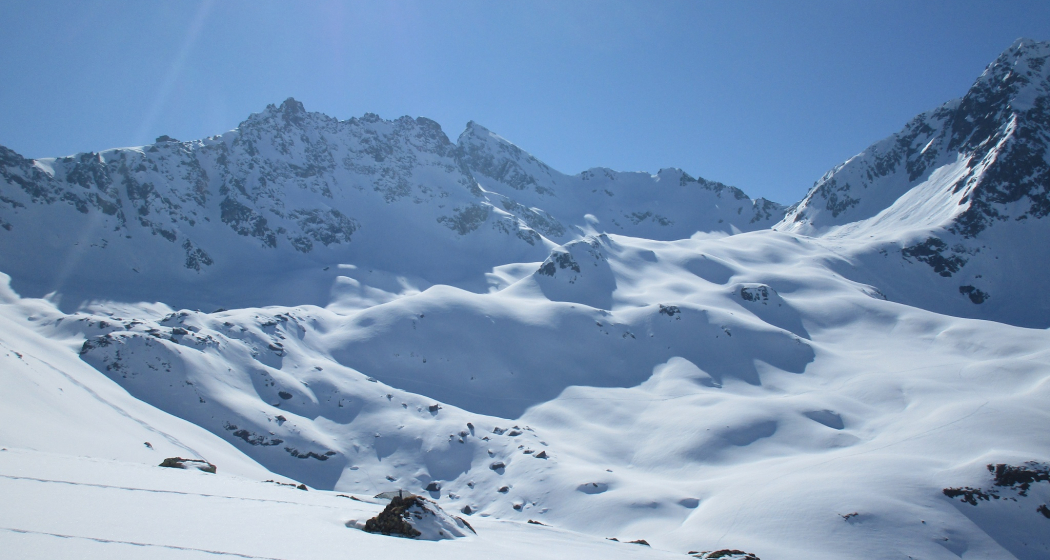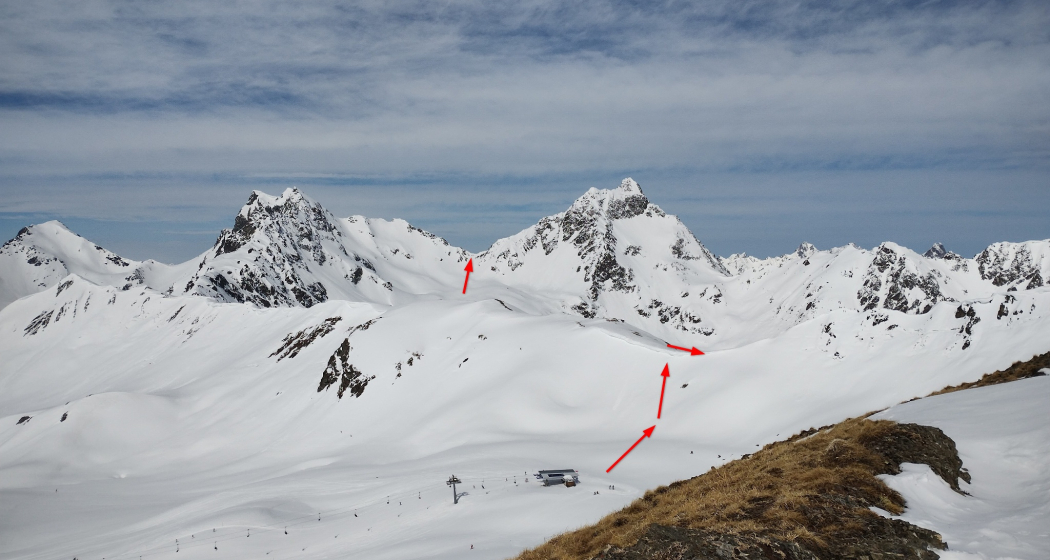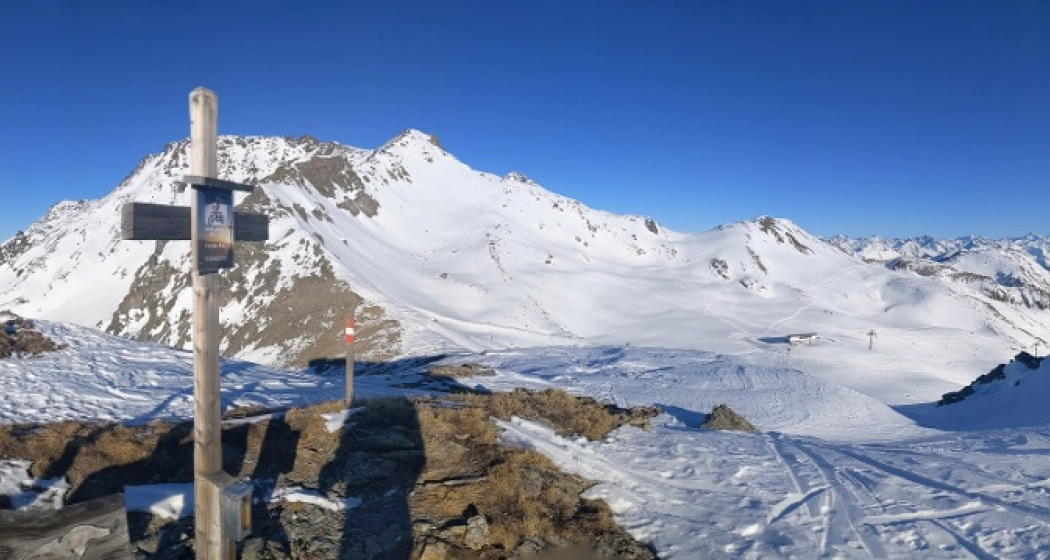Via Visnitzalpe and Vesulscharte into Velilltal


15 Bilder anzeigen

Details
Beschreibung
After a very short and easy ascent from the Grivalebahn, the first beautiful descent slope with 400m elevation opens up at Visnitzjoch. Due to the northern exposure and altitude, good conditions with fine powder snow are usually found here until April.
Then you skin up for about 1h through slightly undulating terrain towards the western Vesulscharte. The pass offers a very good and distinctive orientation point. Only the last approximately 70m to the pass are more demanding as the slope continuously gets steeper.
Once at the top, another 700m of downhill enjoyment towards the west opens up until you inevitably reach the Velillbahn valley station at the end.
Geheimtipp
If you have skied too far after the first slope and want to avoid the ascent, you can alternatively continue the descent. This leads past the old customs hut and eventually to a forest road, on which you pass the small Rotweg chapel until you reach the cable car parking lot in Kappl. The navigation is overall uncomplicated, and the scenic impressions are no less beautiful.
Variant: Alternatively, you can also choose the first ascent further west of the Visnitzbahn via the Visnitzkopf. Instead of skinning, the skis are strapped to the backpack and you walk about 75m up the nearby ridge. At the distinctive avalanche control mast, you look for the crossing; afterwards, a magnificent slope towards Visnitzalpe opens up, leading back to the original ascent route to the Vesulscharte. However, the slope should be critically assessed considering the given avalanche situation.
Sicherheitshinweis
Ausrüstung
Wegbeschreibung
After riding the Grivalebahn lift, you leave the lift heading north or slightly left to a small hollow behind the piste area. Here, skins are put on and everything is prepared for the short ascent to Visnitzjoch, which lies directly ahead. Depending on personal preference, the ascent track can swing further left or further right. The deciding factor for the track choice is usually the cornices that form at the upper edge and indicate the possible crossing to the pass. The 100m ascent itself is uncomplicated.
At the top, the first beautiful descent slope with 400m elevation opens up. Here, as visible on the map, you can choose between two variants: one slightly more easterly with a narrower entry and a more westerly one offering a somewhat more open slope. Due to the northern exposure and altitude, fine powder snow is usually found here until April, only the entry into the slope is often very windblown and somewhat rocky, but generally uncomplicated. At the entry, caution should be exercised, and then one should generally orient to the skier's left, as the further you ski down now, the more you have to climb again afterwards.
About two-thirds down the slope, you traverse west and ski down as far as possible. In the lower area, the terrain becomes more undulating and larger boulders are scattered around more or less. According to your individual track, choose a suitable skinning point between these rocks. You cannot go very wrong if you orient yourself to the distinctive western Vesulscharte. It should be noted that there are two Vesul passes: a western one, looking from Visnitzjoch to the left of Vesulspitze, and a northern one, to the right of Vesulspitze. The second one is somewhat lower but significantly steeper, narrower, and often heavily corniced in the upper part during ascent.
The ascent route then runs through the hollow between the rock bands left and right towards the western Vesulscharte. Especially the right, south-facing slopes should be watched carefully in springtime and signs of increased avalanche activity should be monitored. The track should therefore tend to be placed slightly further north to avoid being surprised by spring avalanches in case of through-thawing.
After about 1h of ascent, you reach the pass. The last 70m are somewhat more challenging as the terrain gets steeper and steeper. However, there are no major technical challenges. In case of a slip, there is no danger of falling. If you set the track a bit further, this section should also not pose a major problem.
Once at the top, there is room for an extended break before embarking on the now following 700m of downhill enjoyment. After the first elevation meters, the slope opens more and more, the terrain becomes more extensive and partly slightly undulating. Navigation is therefore no problem, and there are no major dangers. The route regarding tracking to the Velillbahn valley station can be freely chosen according to personal preferences taking into account the given avalanche situation. Especially the western slopes tend to numerous wet snow avalanches in spring. These should be observed and, if necessary, return to the piste earlier, otherwise, you will automatically reach the lift valley station at the end, as a forest road blocks further descent.
Anfahrt
Öffentliche Verkehrsmittel
Arrival information
Parken
Verantwortlich für diesen Inhalt DAV Sektion Stuttgart.

Diese Webseite nutzt Technologie und Inhalte der Outdooractive Plattform.